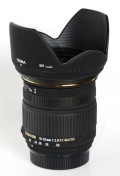Photography: Types of Camera Lenses
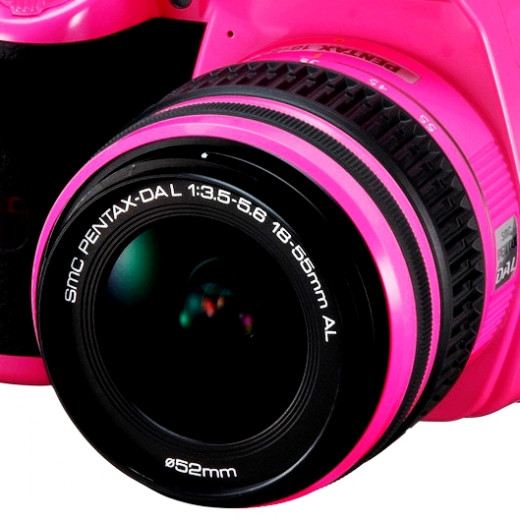
This is an introduction to various types of Camera Lenses, the most important part of a camera, their characteristics and specific usage.
What is a Lens
In simple words, a lens is the eye of a camera. Technically speaking, a lens is an optical device which transmits and refracts the beam of light. Generally, the lenses are made of high quality glass or plastic. There are two major groups of lenses, Simple and Compound. A simple lens can be described as a single element lens. Compound lenses are collection or group of simple lenses.
There are many types of simple lenses, including Bioconvex, Planoconvex, Positive Meniscus, Negative Meniscus, Planoconcave, Bioconcave. (See the image)
Usages of Lenses
A lens is the most essential and most valuable part of Cameras, Telescopes, Microscopes, Film Projectors, Spectacles, Goggles etc. Besides them, lenses are used on large scale in optical machinery.
Types of Simple Lenses
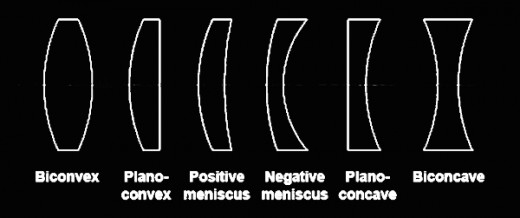
Compound Lens
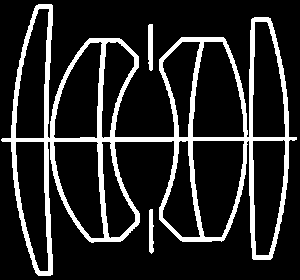
Camera Lenses
Camera lens is a very high quality compound lens fixed in a cylindrical body. Camera lenses are coated with a special transparent anti-reflective thin film which does not allow the light to reflect. The anti-reflective increases the quality of the lens. Camera lenses are expensive and many times their prices are equal to or more than the body of a camera.
In Single Lens Reflex cameras, known as SLR Cameras, you can remove the lens from the camera and use another lens.
You can find the specifications of a camera lens on the front side of the lens, which includes Focal Length, Highest Aperture, Diameter, Brand Name etc.
There are many types of Camera Lenses. Different types of camera lenses are made for the specific requirements of the photographer. Please read the table at the last part of this article, describing the angles of views of the lenses of various focal lengths.
Here is an introduction to various types of Camera Lenses:
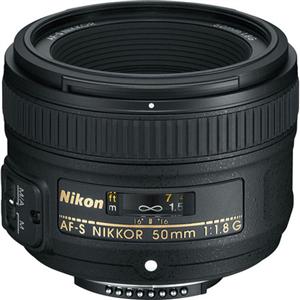
Normal Lens
A normal lens is one which gives natural field of view, i.e. a view which is natural for human eye. So a normal lens gives us a normal angle of view.
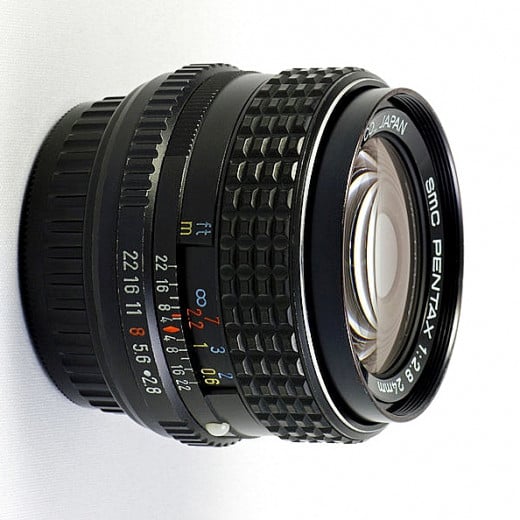
Wide Angle Lens
The field of view depends on the focal length of the lens, and the size of the censor. Lower focal length gives you wider view, longer focal length gives lesser field of view. Wide angle lenses have lower focal length, so they give us a wide view.
Telephoto Lens
Telephoto lens has higher focal length. These lenses are used to take photographs of objects which are far away, like a person on other side of the road, or even the moon.

Zoom Lens
A zoom lens is a lens with variable focal length. So most Zoom lenses can work as a Telephoto lens, Normal lens and wide angle lens. Some zoom lenses have variable higher focal length, so they are used for telephotography. Some Zoom lenses have normal and lower focal length, and they are used for wide to normal view photography.
Zoom lenses is collection of too many lenses, so the sharpness and quality of the image is slightly decreased.
In digital cameras, besides the optical zoom, there is another zooming known as digital zoom.
By using a zoom lens, you can go closer or away from the object without leaving your point.
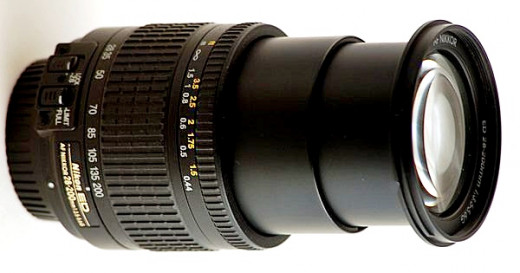
Macro Lens
Macro lenses are used for extreme close up photography. The special design of macro lens allows you to take images of the object in larger size than the original size. By using macro lenses, you can take high quality photographs of small objects like grains, insects, flowers, coins, stamps etc.
Normal digital cameras have 'macro mode' for taking close up photographs.

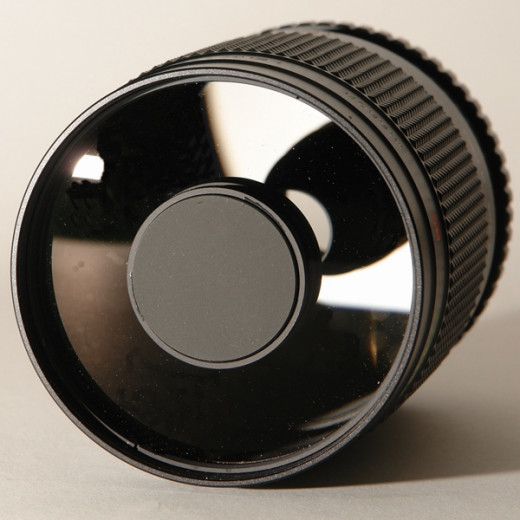
Mirror Lens
Mirror lenses are compact telephoto lenses. Normal telephoto lenses with higher focal lengths are bigger in length and are heavy, but a mirror lens of same focal length is shorter and light weight, when compared to the former. A mirror is used in this type of lens which reflects the image. This helps the lens to keep it compact. (See image)
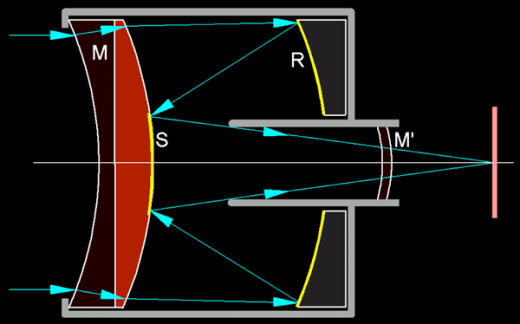
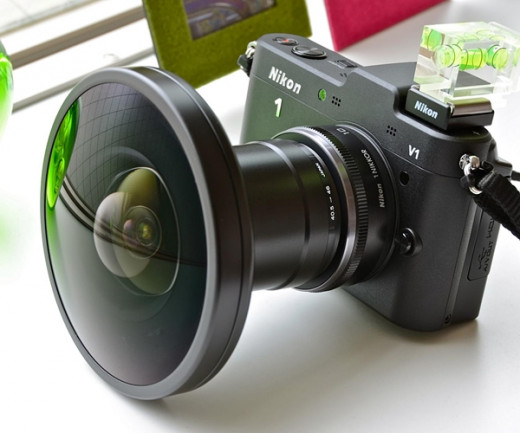
Fish Eye Lens
Fish Eye Lens is an ultra wide angle lens. The focal length of such type of lens is very low, and it captures a view between 180 to 185 Degrees.
Focal Length and Angle of View
Here is a table of focal lengths of various types lenses and corresponding angles of views. (In Degrees)
Focal Length
| Digonal Angle
| Vertical Angle
| Horizontal Angle
|
|---|---|---|---|
0mm Fisheye Lens
| 180
| 180
| 180
|
16mm Wide Angle Lens
| 107.1
| 73.9
| 95.1
|
35mm Wide Angle Lens
| 63.4
| 37.8
| 54.4
|
50mm Normal Lens
| 46.8
| 27.0
| 39.6
|
70mm Lens
| 34.4
| 19.5
| 28.8
|
100mm Tele Lens
| 23.3
| 13.0
| 19.5
|
200mm Tele Lens
| 12.4
| 6.37
| 10.3
|
500mm Tele Lens
| 4.96
| 2.75
| 4.12
|
1200mm Tele Lens
| 2.07
| 1.15
| 1.72
|
You may like to join Photography Equipment Page Here
Also watch video below for more on camera lenses.
The Properties of Camera Lenses
Photography Hubs
- What is a Digital SLR Camera?
What is a Digital SLR Camera? If you are new to photography, this article will help you to know about the basic features of a DSLR camera. - Compact Digital Camera Buying Tips
Before buying a compact digital camera, you should consider few things which will help you to buy a better camera. - How to Sell Your Photographs Online?
There are Many Buyers for Your Photographs: If you are a good photographer, have an increasing collection of quality photographs, there are many buyers for them. - Freelance Press Photography: How to Earn From It
In this digital age, taking photographs and sending them anywhere in the world has become too easy. If you can take better photographs, you can sell them to newspapers and news magazines. You just want to know what are their requirements. - Child Photography | How to Photograph Children
Some tips on taking better photographs of children. You do not need to have expensive cameras for getting great photographs. Try these methods and you will get great photos of kids and children.


